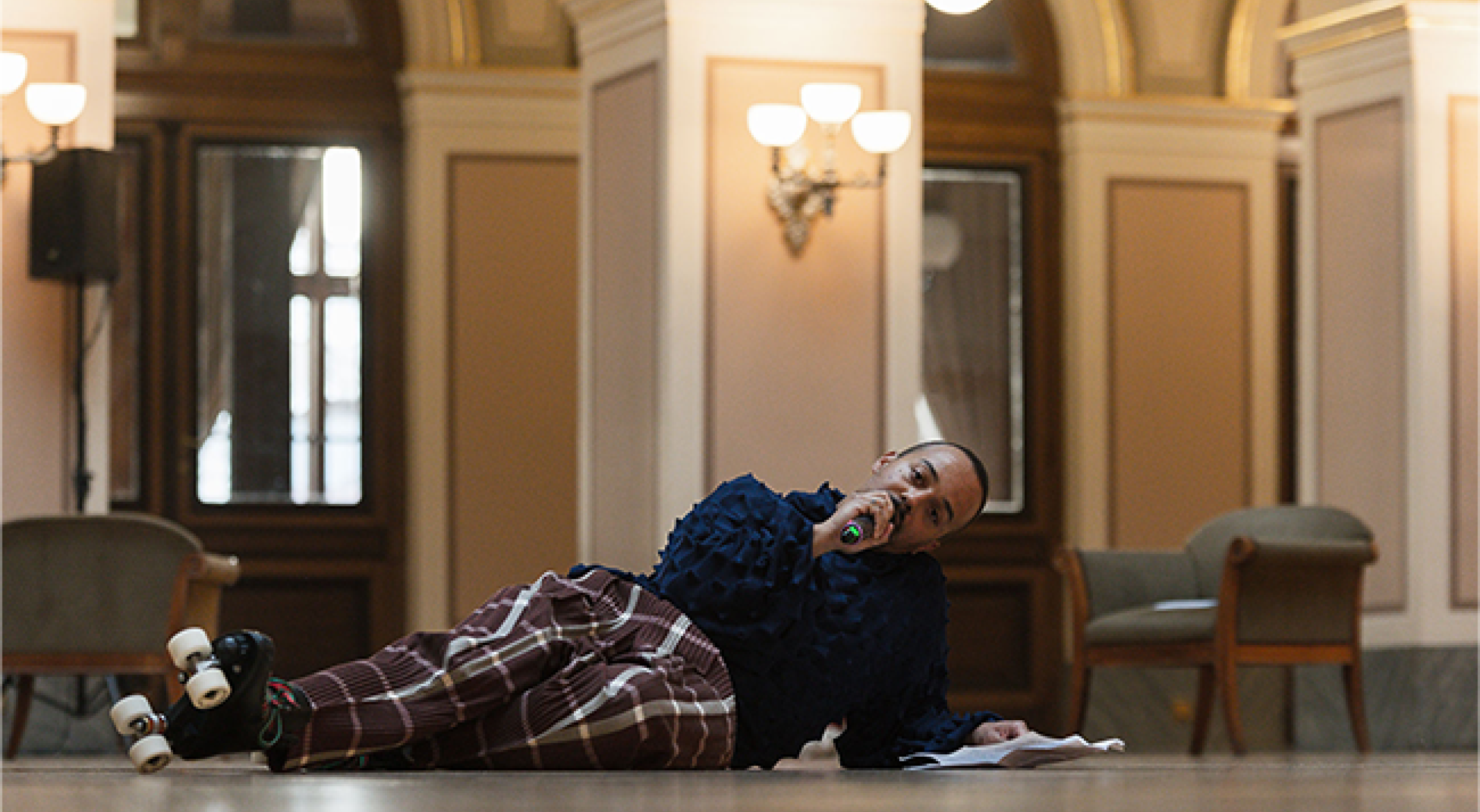Échelle Humaine Paul Maheke
L’Origine de la mort
Archive 2023
Lafayette Anticipations – Fondation Galeries Lafayette
septembersept 16 – 17
septembersept 16 – 17
Creation, Paul Maheke
Interpretation, Paul Maheke in collaboration with a musician
Coproduced by Astrup Fearnley Museet; Goodman Gallery; Galerie Sultana
With the support of Villa Albertine
L'Origine de la mort is a reflection on different forms of interconnection, deepening Paul Maheke's interest in the possible dialogue between dance, sound and identities.
Maheke uses a variety of sources, from science fiction to diary entries, sketches and preliminary texts (both found and written by the artist), as well as music and movement.
This new performance becomes a meditation on the fine line between otherness and strangeness, embodied in the "rink culture" of Chicago's South Side as well as in the character of the vampire.
